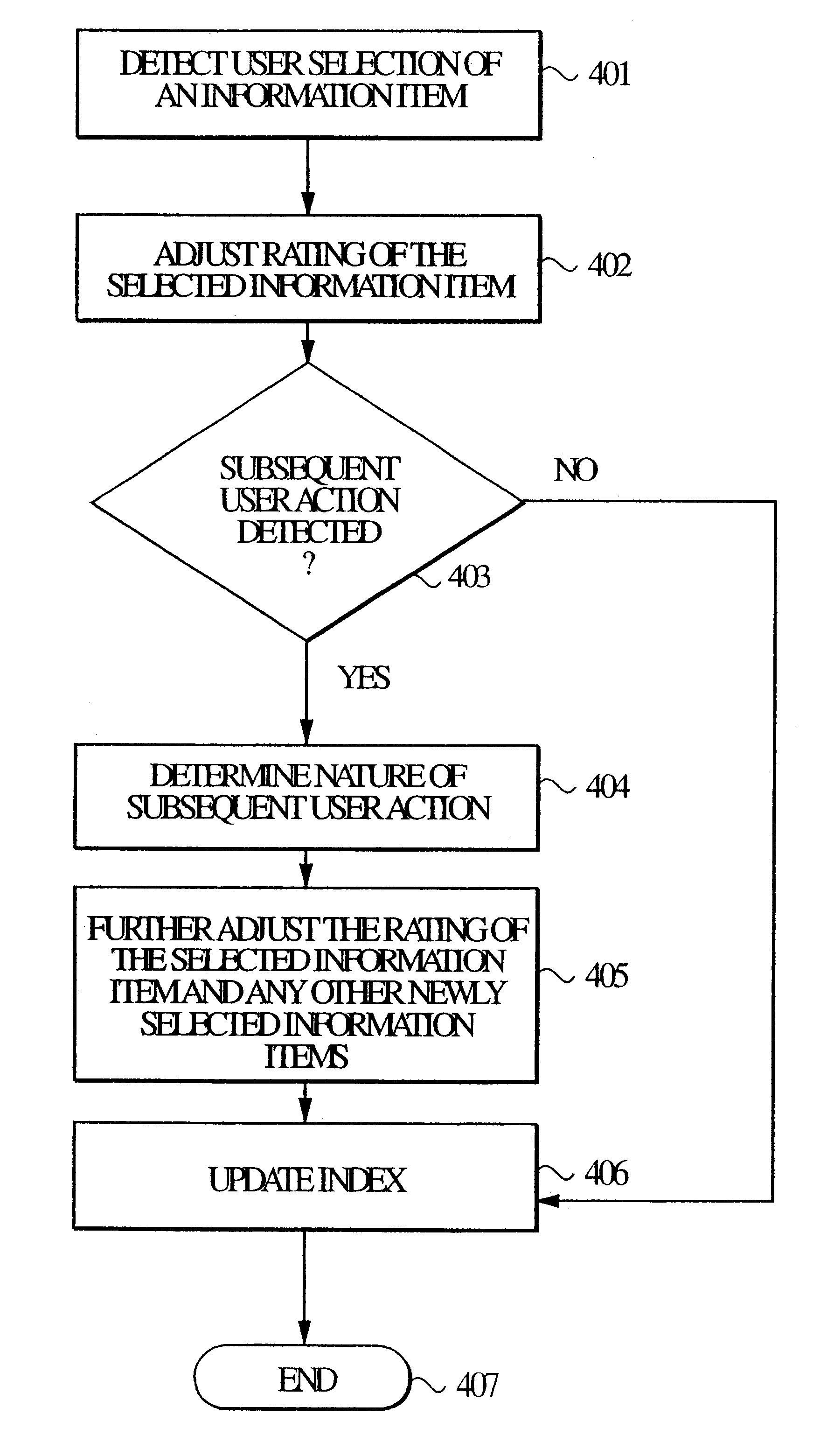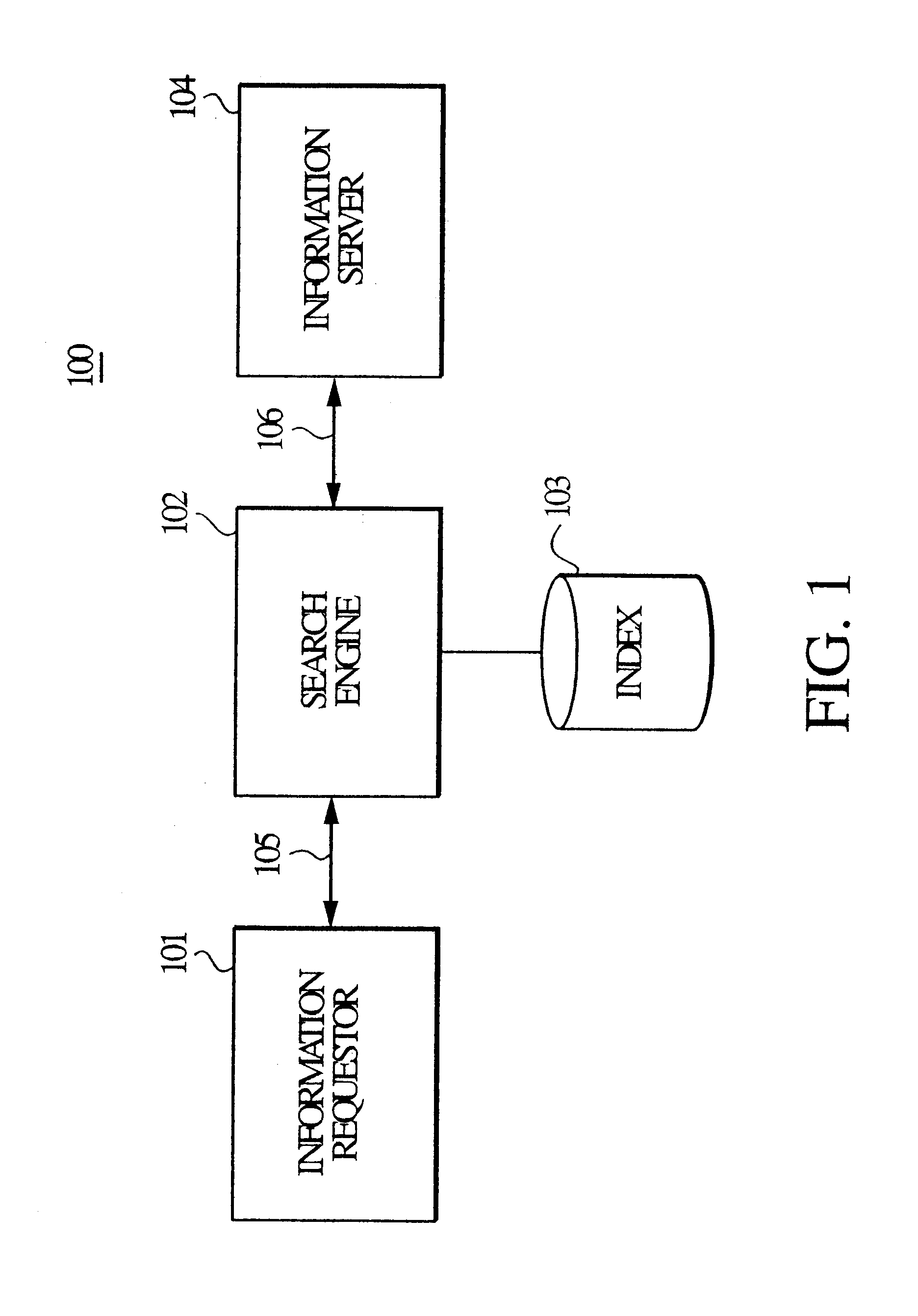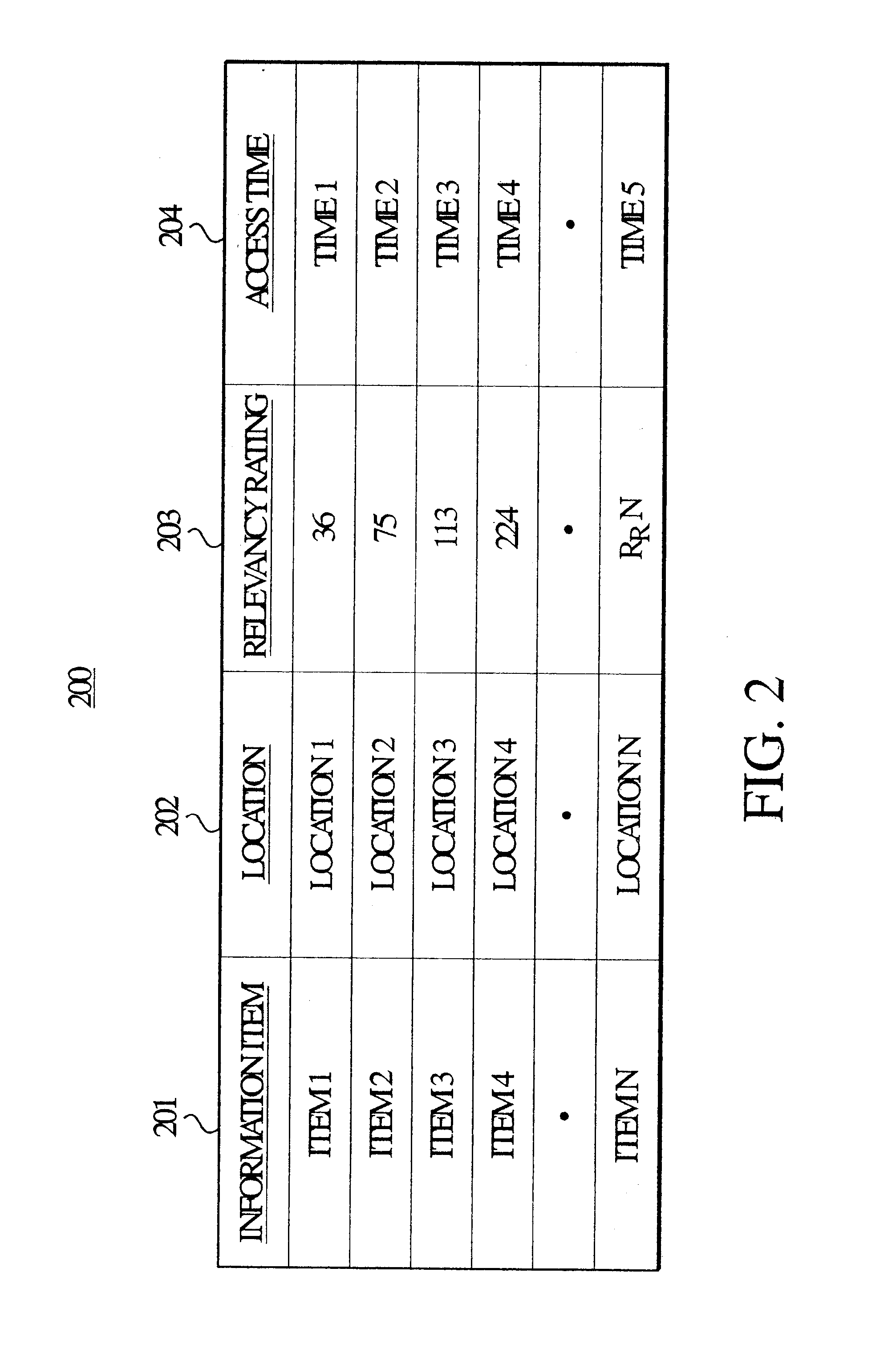Implicit rating of retrieved information in an information search system
a technology of information search system and index, applied in the field of indexing of retrieved information in an information search system, can solve the problems of reducing the usefulness of the database, user must still sift through an excessive number of returned entries, and conventional relevancy rating is thus often not accurate prediction of the usefulness or relevance of an information item
- Summary
- Abstract
- Description
- Claims
- Application Information
AI Technical Summary
Problems solved by technology
Method used
Image
Examples
example 2
In step 401, when a user selection of an informational item, e.g., INFO#1, is detected, the relevancy rating of INFO#1 is increased by RATE#1 in step 402, to arrive at an adjusted relevancy rating for INFO#1. If the user takes no other action, the adjusted relevancy rating is stored in the index 103 in step 406.
However, when the information requester 101 subsequently submits, via the communication interface 105, a question with respect to the informational item being sought, the relevancy rating of INFO#1 is further adjusted, i.e., decreased by RATE#2, and the resulting adjusted relevancy rating is stored in the index 103, since the information item INFO#1 did not end the search.
example 3
In step 401, when a user selection of an informational item, e.g., INFO#1, is detected, the relevancy rating of INFO#1 is increased by RATE#1 in step 402, to arrive at the adjusted relevancy rating for INFO#1. If the user takes no other action, the adjusted relevancy rating is stored in the index 103 in step 406.
However, when the information requester subsequently initiates an additional search, e.g., send a search request over the communication interface 105, and if newly matched informational items, INFO#2 and INFO#3 were found as a result of the new search, the relevancy rating of INFO#1 is further adjusted, i.e., decreased by RATE#2. The relevancy ratings of both INFO#2 and INFO#3 are increased by RATE#3. The respective adjusted relevancy ratings are stored to update the index 103.
example 4
In this example, the inventive relevancy ranking method is utilized in presenting an ordered list of frequently asked questions (FAQs) on the World Wide Web, e.g., from a customer service web site. For simplicity, the initial relevancy ratings associated with each respective FAQ item in the service web site is assumed to have an initial value of zero (0). However, it should be readily apparent to one skilled in the art that the initial values of the relevancy ratings do not have to be initialized to zero, but are merely being assumed to provide an easier understanding of this example.
When a customer first visits the service web site, the customer is presented with a sorted list of FAQ titles. When the customer selects one of the FAQ titles to view in detail the respective FAQ item associated thereto, e.g., (FAQ#1), the relevancy rating associated with this selected FAQ item is increased by RATE#1 (e.g., 2 points), resulting in the new relevancy rating value of two (2). If this FAQ i...
PUM
 Login to View More
Login to View More Abstract
Description
Claims
Application Information
 Login to View More
Login to View More - R&D
- Intellectual Property
- Life Sciences
- Materials
- Tech Scout
- Unparalleled Data Quality
- Higher Quality Content
- 60% Fewer Hallucinations
Browse by: Latest US Patents, China's latest patents, Technical Efficacy Thesaurus, Application Domain, Technology Topic, Popular Technical Reports.
© 2025 PatSnap. All rights reserved.Legal|Privacy policy|Modern Slavery Act Transparency Statement|Sitemap|About US| Contact US: help@patsnap.com



